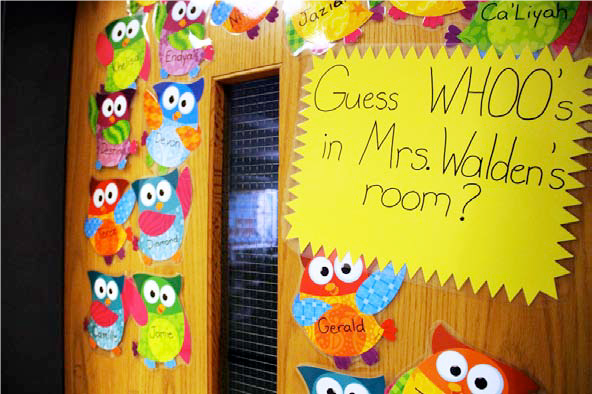Every educator, parent and community member has the hope that our schools are safe places for students to learn. In an effort to reach that goal, a group of both security and education stakeholders, including the MEA and the Maine Department of Education, came together to find 20 strategies for safer, more effective schools. The stakeholder group produced a report several years after the school shooting in Newtown. While the report isn’t brand new, Maine Educator reviewed the group’s findings, which are worth review after the recent shooting in Parkland, Florida.
The tragedy in Florida has many educators speaking out on everything from arming educators to what safety measures can or do work to protect students. NEA surveyed members on these topics to help further the conversation of protecting our students. See those results in the side bar.
While teachers and support staff may not be the ones to create school safety procedures, they can and should have a voice in the process while also being proactive in their own working environments.
Below are five findings from the safer, effective schools report.
Improve natural surveillance
Natural Surveillance is a term used in Crime Prevention through Environmental Design. The idea is to open up lines of sight in and around schools to make it easier for staff and students to see something or someone inside or outside that may be suspicious, and take immediate action. A simple way to do this is to tip a window shade in a classroom to allow for visibility of the school grounds. Research shows that offenders are often deterred by good natural surveillance.
Reduce the presence of targeting indicators
Taking away signs that specifically show where students or staff are located is a key in protecting those who may be targeted. School staff may not be aware if someone is a target, and signs pointing to where certain children are located make it easy for potential aggressors to find their target. The most common examples of target indicators are the names of students and teachers on their classroom doors, photographs of students posted outside the classroom, and parking signs that indicate the title of the person who parks in the spot. While it’s important to have a positive school environment, simple changes can eliminate these target indicators. For example, post signs with names or pictures in common areas or inside the classroom, not visible from the hallway. For parking spaces, instead of using the word “Principal” use the word “Reserved.”
Add important life-saving emergency protocols to crisis plans
While many schools focus on fire and lockdown drills, there are other life-saving emergency protocols that should be developed, trained, drilled, and evaluated including a reverse evacuation, shelter in place, and room clear protocol.
Reverse evacuation protocols are procedures used to quickly move students and staff inside to the safety when there is a dangerous situation outside.
The shelter in place protocol is designed to protect students and staff from external hazardous materials incidents that can occur from things like utility failures, and other situations where dangerous contaminants are released into the environment near the school. The room clear can be used to clear students and staff from an enclosed space when it would be dangerous for them to stay, or when staff need to empty just one particular area, but not the whole school.
Increase the focus on the first 30 seconds of a school crisis event
More than 100 students and staff have died in schools when school personnel did not take immediate action in a life or death situation because they felt they couldn’t because there was no supervisor present to give an official “go ahead” and direct their actions. It is important to focus on the first few seconds of a life-threatening crisis. The research found “The Window of Life” model creates a clear path on how to act and what to do in the immediate seconds following an incident.
Carefully evaluate how well staff are able to communicate during an emergency situation
Effective emergency communications includes having proper technology to reach staff internally and the public externally. As an educator or local association, ask an administrator to conduct a survey of staff to identify gaps in communication so they can be addressed. Improvements in communications will provide benefits, regardless of the type of situation.
School and Gun Violence Survey
The NEA surveyed 1,000 members across the nation after the shooting in Parkland, Florida. Among those surveyed, 77% were female, 37% identified as liberal, 31% identified as conservative and all worked in a public school. The following are some of the survey results.
How worried are you that there could be a mass shooting a your school?
- 60% very worried/somewhat worried
- 28% not too worried
- 11% not worried at all
Would you feel safer or less safe if teachers or school employees were armed with guns in your school if they were licensed to carry a gun?
- 23% Safer
- 64% Less Safe
- 12% No difference/don’t know/refused
Proposals that could be considered by Congress in the coming year and % of members who agree with the ideas
- 85% Ban the sale and possession of military-style semi-automatic assault weapons to everyone except the police and military
- 99% Require criminal background checks for everyone who wants to buy a gun
- 22% Arm teachers and other school employees with guns in schools if they are licensed to carry a gun and received firearms training
Other proposals to help prevent gun violence and if members believe the idea is effective
- 85% believe putting armed security guards or police in schools is effective
- 29% believe arming teachers or other school employees is effective
- 97% believe increasing funding and resources for mental health counseling in schools and communities is effective
Security measures at schools and percentage of schools with the following in place:
- 39% Armed deputies or security guards
- 34% Non-armed security guards
- 78% School performs active shooter drills
- 8% Metal detectors




